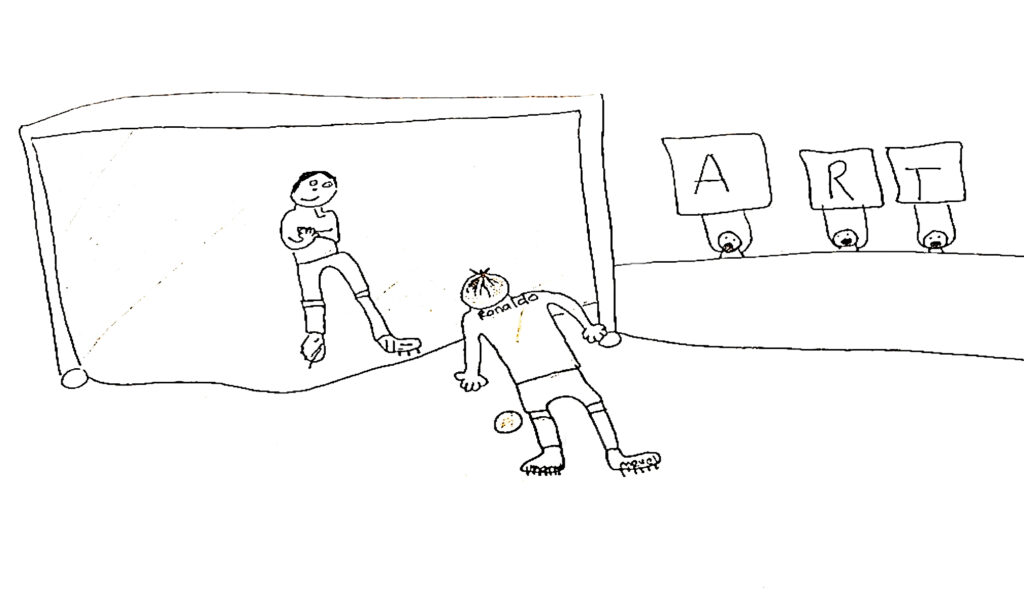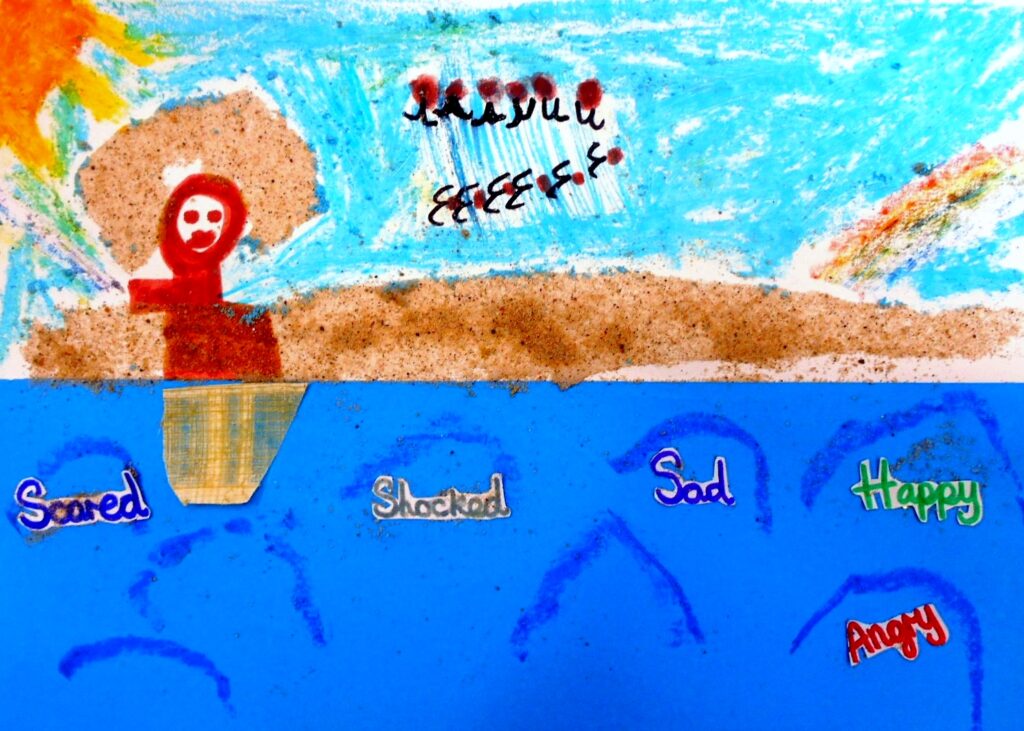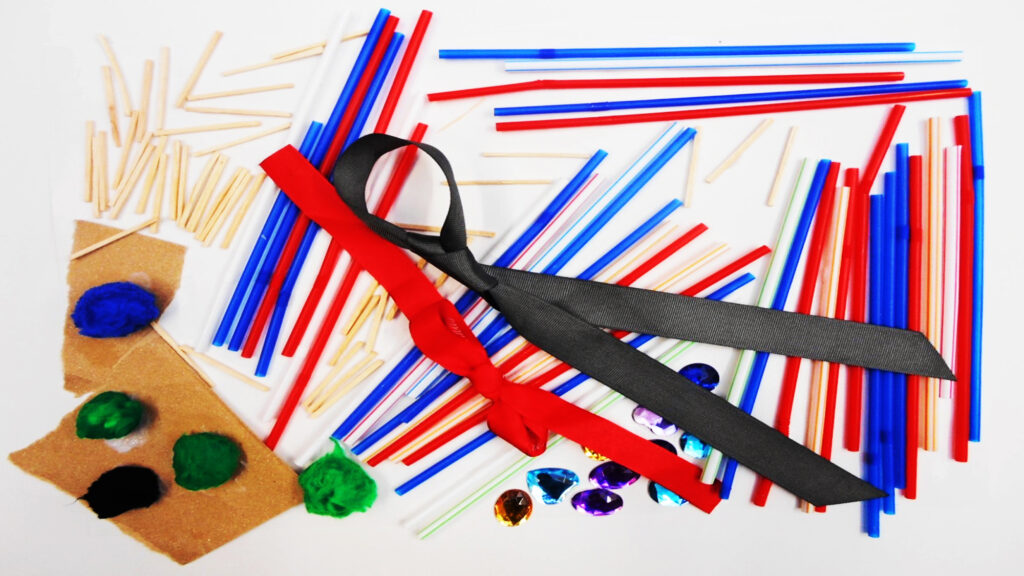Art therapy with children in primary schools
Children can experience a range of social, emotional and mental health difficulties that affect their wellbeing, learning, and inclusion in school life. Across the world, one in 10 children are estimated to be experiencing mental health difficulties [1]. In the UK, a survey of over half a million children reported that one in five are unhappy with their mental health [2].
Children can be affected by bullying or abuse at school or at home, or may be neglected, witness domestic violence, experience major loss or changes in family structure, or serious illness in the family. Physical disabilities can also make communication a struggle, leading to frustration and distress. Children who are refugees must adjust to new surroundings, language and customs, as well as the loss of their previous life. Some children are neurodivergent, for example being autistic can sometimes mean that the school environment may result in additional challenges.
The things children struggle with can show in their behaviour and impact their thoughts and feelings leading to them becoming anxious, angry, depressed, having variable moods, or being withdrawn. Some children may be in danger of school exclusion, which can seriously negatively impact their opportunities in life and their mental wellbeing [3].
Overview
- Art therapy is offered in schools in many countries. Art therapy in school can offer children support early on when they have difficulties. For some, this may avoid them needing to be taken out of school to attend therapy sessions. The school environment can also feel like a safer place to receive support than a mental health service [4-6].
- Depending on how a particular therapist works, sessions can be with an individual child or a group, and may or may not involve parents or guardians. In the UK, art therapists work in schools in collaboration with special educational needs (SEN) representatives, teachers and parents.
- The research studies that have been done on art therapy in primary schools suggest that it is helpful for children’s wellbeing [5, 7-16]. There is some evidence that it may also benefit their schoolwork [5, 17].
Why art therapy may be helpful
When children experience social, emotional or mental health difficulties, they sometimes lack the skills needed to immediately express their feelings or needs in words. This can lead to behaviour that may get in the way of their schoolwork or friendships. Art and creative activities are a common aspect of childhood experience so children can usually use art materials.
In art therapy, children can start to express whatever is on their minds through drawing, painting, or making things with plasticine or other materials [5, 9, 10, 17]. The art therapist can then help them to find the words to talk about their thoughts, feelings and needs, by first asking them to talk about their artwork and themselves. This talking in art therapy may then make it easier for children to tell their teachers or parents how they are feeling or what they need, at appropriate times [5, 17].
The result can be improved engagement in class as well as general wellbeing [5, 12, 17]. Art therapy may also help prevent some children from falling behind in their classroom learning [17], but this is an area that needs more research.
What children have said about art therapy
Some research studies have included illustrated testimonies from children about their experiences of art therapy [12, 17].

When you make art, it can take your mind off the bad stuff. This can help you feel safer

When you look at the art you’ve made you can actually see what feelings are in your mind and you can wash them away

In art therapy you get to make anything you want. It can help you change your behaviour and calm down

Doing art can make you comfortable, then when you go back to class you’re still comfortable
About the research studies
Only a few studies on art therapy in primary schools are randomised, controlled trials, comparing art therapy with other therapies or no therapy [9, 12, 14, 16]. Randomised trials are helpful for establishing that it was art therapy (and not something else) that led to the children’s improved wellbeing, or they can show that art therapy leads to greater improvement than another therapy or activity.
Even in randomised trials, the type of art therapy varies considerably, and it is sometimes combined with elements of other therapies. One set of studies conducted in the UK has involved an attempt to provide a clearly specified approach to children’s art therapy that can be tested in future trials [10, 15, 17, 18].
While it appears that primary-school based art therapy can be helpful for children, we also think it could be helpful if a specific approach could be established. This will make it easier for everyone to know what to expect in children’s art therapy, and to be sure that research has established its helpfulness.
Evidence sources
-
Improving the mental and brain health of children and adolescents, World Health Organization website
- Mental Health of Children and Young People in England, 2023 – wave 4 follow up to the 2017 survey (2023)
A survey run by NHS England. - Health Equity in England: The Marmot Review 10 Years on (2020)
A comprehensive review of evidence, indicating links between social conditions of relative poverty and deprivation, and poor health in England, including the effects on children’s opportunities and life chances. - Working towards mentally healthy schools and colleges: the voice of students (2021)
A report on a survey of 11 to 19-year-olds in English secondary schools and further education colleges, inquiring about their mental wellbeing. - Processes of change in school-based art therapy with children: A systematic qualitative study (2017)
A peer-reviewed journal paper reporting the results of a qualitative research study with 40 participants in English primary schools. Interviewees were children who had attended art therapy, parents of children who attended, and teachers who had a child in their class who attended art therapy. - Mental health in schools: a manual (2021)
A guide for teachers and others involved in children’s education internationally, to help them support young people’s mental well-being. - A randomized trial to test the effectiveness of art therapy for children with asthma (2010)
A peer-reviewed journal paper reporting the results of a small randomised trial with 22 children with asthma in school in the USA, comparing art therapy with being on a waiting list for art therapy. The researchers looked at the children’s anxiety, communication and quality of life. - Effectiveness of school-based mindfulness and art therapy group program (2021)
A peer-reviewed journal paper reporting the results of a comparison of outcomes between children who received art therapy and mindfulness training in groups, and children who were assigned to a waiting list for this therapy, in the USA. Assignment to the two groups was not random. There were 83 child participants, 51 parents and 22 teachers. Children, parents and teachers completed questionnaires about the children’s wellbeing and behaviour. - Experiences of elementary school counselors and students in using reality art therapy to address chronic conditions (2019)
A peer-reviewed journal paper reporting the results of a small qualitative study in the USA involving interviews with 9 school counsellors and 9 children with long-term physical health problems such as diabetes, asthma and ADHD. After the counsellors were trained to deliver a form of art therapy called Reality Art Therapy, they delivered it, and then the researchers asked for their views on it, and the views of the children. - Empowering bullying victims through artistic expression (2016)
A peer-reviewed journal paper reporting in detail the results of a form of art therapy aimed at helping four children who had been bullied, in a school in Canada. - Online art therapy in elementary schools during COVID-19: results from a randomized cluster pilot and feasibility study and impact on mental health
A peer-reviewed journal paper reporting the results of a small randomised trial in Canada, comparing art therapy involving drawing pictures of emotions, with drawing a mandala (form of circular pattern). There were 22 child participants. The researchers assessed the children’s mood and behaviour. - Primary-school-based art therapy: exploratory study of changes in children’s social, emotional and mental health (2019)
A peer-reviewed journal paper reporting the results of a pre-post study in England, with 45 children. Children had art therapy, and their teachers rated their behaviour before and after, and the children were asked what they thought about art therapy. - A process-outcome study of school-based art therapy (2022)
A peer-reviewed journal paper reporting the results of a study in which 32 art therapists reported on their work with 44 children in schools in Israel. They reported on changes in the children’s engagement with the art therapy, as well as their behaviour. - Recognizing emotions: testing an intervention for children with autism spectrum disorders (2015)
A peer-reviewed journal paper reporting the results of a USA-based trial involving 109 children with ‘learning disorders’. The children were randomly assigned to four groups: art, games, art therapy and no intervention. The researchers looked at children’s sense of empowerment, control over their learning, and self-esteem. - Characteristics of parent-child art psychotherapy in the education system (2021)
A peer-reviewed journal paper reporting the results of a detailed study of what four art therapists wrote about six child clients over the course of therapy in primary school in Israel. Some sessions involved parents. - School bullying among left-behind children: the efficacy of art therapy on reducing bullying victimization (2019)
A peer-reviewed journal paper reporting the results of a trial of art therapy with 180 children who had been bullied, in rural primary schools in China. Children were randomly assigned to one of three groups: art therapy, counselling or no intervention. The researchers looked at changes in anxiety, self-esteem and bullying. - Primary-school-based art therapy: A mixed methods comparison study on children’s classroom learning (2020)
A peer-reviewed journal paper reporting the results of a comparison of 25 children’s learning progress in English primary schools between children receiving art therapy because of behavioural and emotional difficulties, and 25 children matched for initial learning attainment and not viewed as requiring art therapy. There was also a focus group with 10 teachers and interviews with 37 children. - Art therapy for children following adverse childhood experiences: An intervention development study (2022)
A peer-reviewed journal paper reporting the results of a rigorous process undertaken to develop a clearly specified and evidence-informed mode of children’s art therapy that will be acceptable to art therapists, parents and teachers. - Primary school mentalisation-based art therapy (Primary-smART): A Person Based Approach optimization study (2024)
A peer-reviewed journal paper reporting the results of a study in the UK to improve the usefulness of a digital manual for art therapists to use when delivering art therapy to primary school children. The study involved 18 art therapists and used a recognised method for optimising a therapeutic intervention. - An investigation of the effectiveness of arts therapies interventions on measures of quality of life and wellbeing: a pilot randomized controlled study in primary schools (2020)
A peer-reviewed journal paper reporting the results of a randomised trial in English primary schools, with 62 children. Children were randomly assigned to one of four arts therapies or to a waiting list, after which those waiting received therapy. The four therapies were music, art, dance movement and drama. The researchers looked at wellbeing, quality of life and behaviour.